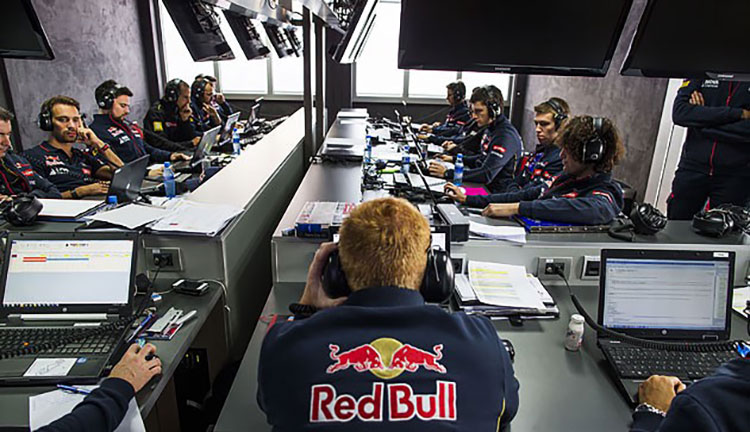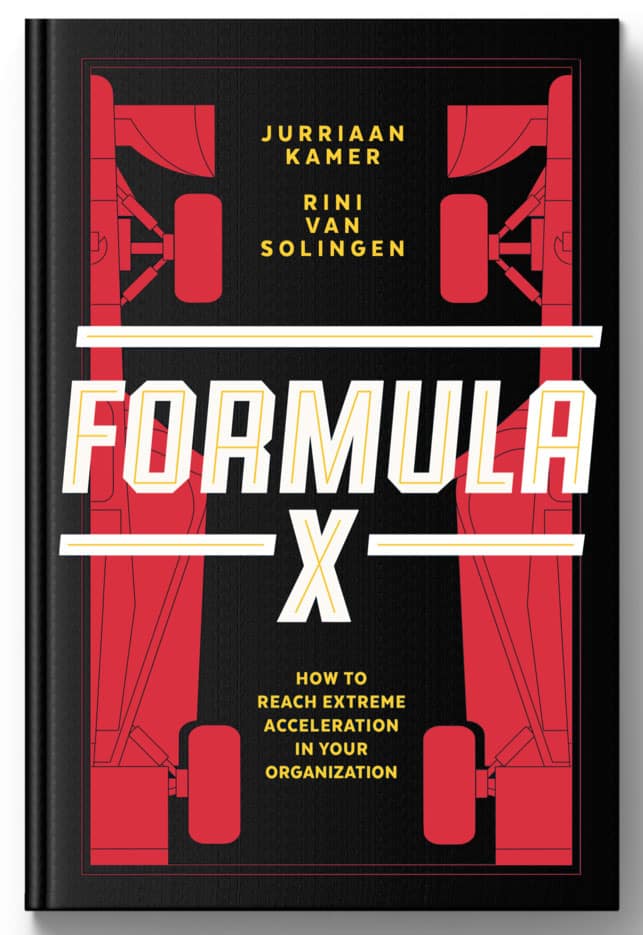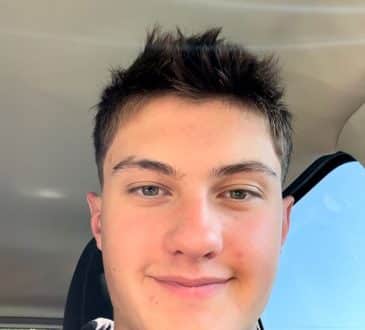Put Your Business In The Fast Lane By Running It Like A Race Team

The global pandemic has forced many organizations to change the way they work overnight. But this opportunity is bigger than mastering remote work and new tools. We have the chance to adopt a way of working that will make us faster and more resilient.
Right now, we need to be able to continuously steer and act on what is unfolding in front of us. We want to leverage everyone’s brainpower in the organization to stay afloat and became better and faster. We need an organization where people are highly engaged and can move fast without being held back by bureaucracy.
For our book Formula X “How to reach extreme acceleration in your organization”, we have studied the principles, beliefs, and practices of some of the highest performing organizations. In this article, we go behind the scenes of Formula 1 motor racing, the world’s fastest and most innovative sport, and see what businesses can learn from them.
Each of the ten F1 teams employs between 500-1,500 people (including two drivers), making it the largest team sport in the world. Every week, the teams implement approximately 1,000 changes to improve their car’s performance, while having to comply with a large number of regulations. In this cutthroat environment, the team with the highest innovation speed stays ahead. Throughout the season, this results in an average performance increase of two seconds per lap.
Usually, their season counts races in 22 countries in 9 months, but Covid-19 has made this impossible. A testament to their agility, most teams have redirected their skills and resources to build massive amounts of medical equipment, in only a matter of days.
Now is the ultimate time to rethink your organization. Following the FASTER model from our book here are a few things you can try:
Be clear about what is essential
We don’t have enough time to do our work, but we fill our day with energy-draining meetings. We don’t have the information we need, but we are buried in emails, powerpoints, and reports. We are under pressure to do more work, but we are unclear about what we’re ultimately trying to achieve.
‘Speed is irrelevant if you are going in the wrong direction’ – Mahatma Gandhi
F1 racing teams have a crystal clear goal and laser-sharp focus: win races and championships. After each race, everyone can see if the team is moving in the right direction or not. Team members know exactly how their daily work contributes to the overall success of the organization. And through their weekly ‘all-hands meetings’, they learn what is important and what isn’t. This ‘shared consciousness’ enables people to act from their expertise and role, without needing to ask for approval or align with others.
In these turbulent times, it becomes even more important to separate the essential from the non-essential. Try to get to a point where everyone can answer the question: “What does success look like in the next 3 weeks, 3 months, and 3 years for your team and the wider organization?” Then, do a ‘start, stop, continue’ exercise on your portfolio of initiatives.
Redesign your operating rhythm
Now that we are all working remotely, we see many organizations trying to replicate their pre-COVID way of working into the digital space. The result: executives find themselves in an exhausting schedule of back-to-back video calls and an exploding email box, leaving little energy for thinking or deep work.
We see other organizations recognize the opportunity to go towards the second phase of remote. They get rid of internal emails and leverage asynchronous communication and multi-player collaboration tools. They become intentional about how they communicate and meet by adopting a fit-for-purpose operating rhythm, creating a ‘heartbeat’ of information flow.
When looking at F1 racing teams, we see a similar pattern. For example: immediately after every race, there is a post-race debrief meeting with the roughly 60 engineers that were involved at the circuit. They are joined by an additional 40 engineers located in the ‘remote garage’ in the team’s factory, who have helped with strategic decisions based on real-time data from the cars.
During the debrief they always go through the same detailed checklist: How were the tires? How did the engine perform? How was the race strategy? Essential data is captured, lessons are shared.
The post-race debrief takes almost two hours (longer than the actual race). And it is just one of the 50 recurring meetings in a typical race weekend focused on reviewing, learning, and improving. F1 teams understand this is what enables them to keep up with the fierce competition.
Here is how you can make a start. First consider, what are the conversations that need to happen to achieve our goals and get faster over time? From there, design a cadence of meetings with a specific purpose in mind and an associated meeting design. Have someone take the role of facilitator and scribe in every meeting. And cancel any other unnecessary meetings.
Accelerate decision making
In times of rapid change, we need to steer more quickly. In the best case, everyone in the organization is enabled to act quickly and safely when there is an opportunity. But the reality is that people and teams often lack authority and are afraid to fail. We don’t distinguish between ‘reversible’ and ‘irreversible’ decisions. The result: we waste numerous hours in meetings to ask for permission, build consensus, and find the ‘perfect’ decision.
F1 racing teams (and other fast organizations) understand that the real risk is that they become too slow to survive. They need everyone in the team to constantly find ways to get another fraction of a second out of the car. Sir Frank Williams (founder of Williams F1) found a clever solution. When was asked for permission, he would always ask the same question: “Will it make the car go faster?” In case of a positive answer, he would approve the request. Over time, people stopped asking for his permission as they would already know the answer.
Another feature of F1 teams is their strong ‘no-blame’ culture. They understand that if people are afraid to fail, they will hesitate to make decisions that would push the limits. As the former technical director of Mercedes F1 puts it: “Every time you have a negative response to an issue, you’re denying yourself the opportunity to improve.”
Consider applying the following practices: 1. make decision rights and guardrails explicit, 2. distribute information and authority to the edge of the organization, 3. celebrate noble failure, 4. practice asking ‘is it safe to try?’ instead of ‘is it perfect?’
Reduce organizational drag
F1 racing teams can’t afford to be slow. To increase speed, they involve everyone to reduce the car’s weight and aerodynamic drag. They eliminate tenths of seconds when doing their pit-stops. And in the way they organize, they optimize to reduce ‘organizational drag’ by minimizing bureaucracy. It is the aggregation of marginal gains that enable long-term acceleration and success.
To improve resilience in your organization, free your people from unnecessary rules and overly complicated processes that were designed to prevent a few edge cases. Instead, adopt light-weight processes and simple heuristics, relying more on people’s ability to self-manage and assuming people can be trusted to act in the best interest of the company.
Start by asking your colleagues this powerful question: “What is holding you back from doing the best work of your lives?” Then co-create an alternative way of working and try it out. Evaluate if it is better, rinse, repeat and never stop. In other words: spend less time executing ‘in’ the system, but more time working ‘on’ the system.
There has never been a better time to rethink your organization’s Operating System and become as fast and resilient as a Formula 1 team.
Written by Jurriaan Kamer. Have you read?
# Ranking of the World’s best countries for Cultural Influence, 2020
# Ranking of the world’s most powerful people, 2020
# Ranking of the World’s best countries for its citizens to live, 2020
# Ranking of the World’s most powerful women, 2020
Bring the best of the CEOWORLD magazine's global journalism to audiences in the United States and around the world. - Add CEOWORLD magazine to your Google News feed.
Follow CEOWORLD magazine headlines on: Google News, LinkedIn, Twitter, and Facebook.
Copyright 2025 The CEOWORLD magazine. All rights reserved. This material (and any extract from it) must not be copied, redistributed or placed on any website, without CEOWORLD magazine' prior written consent. For media queries, please contact: info@ceoworld.biz










